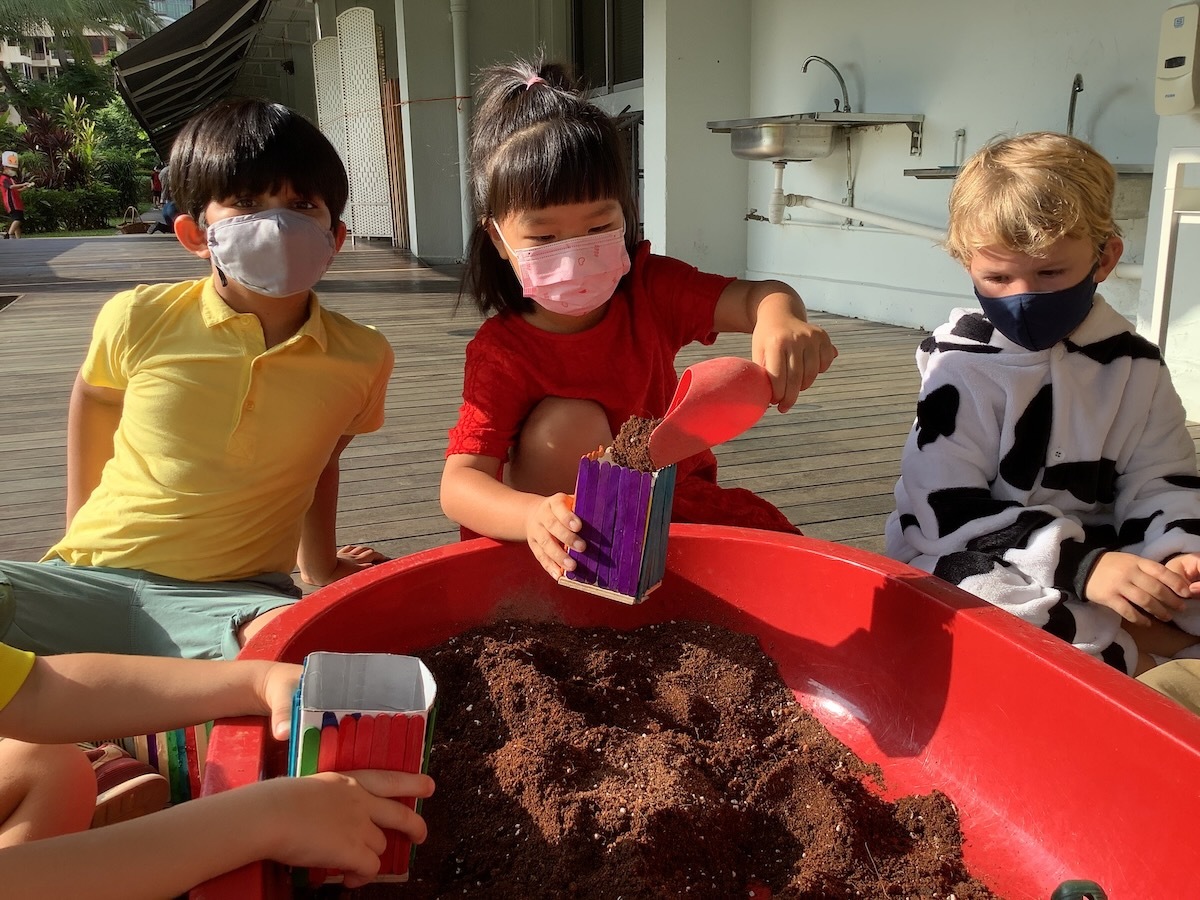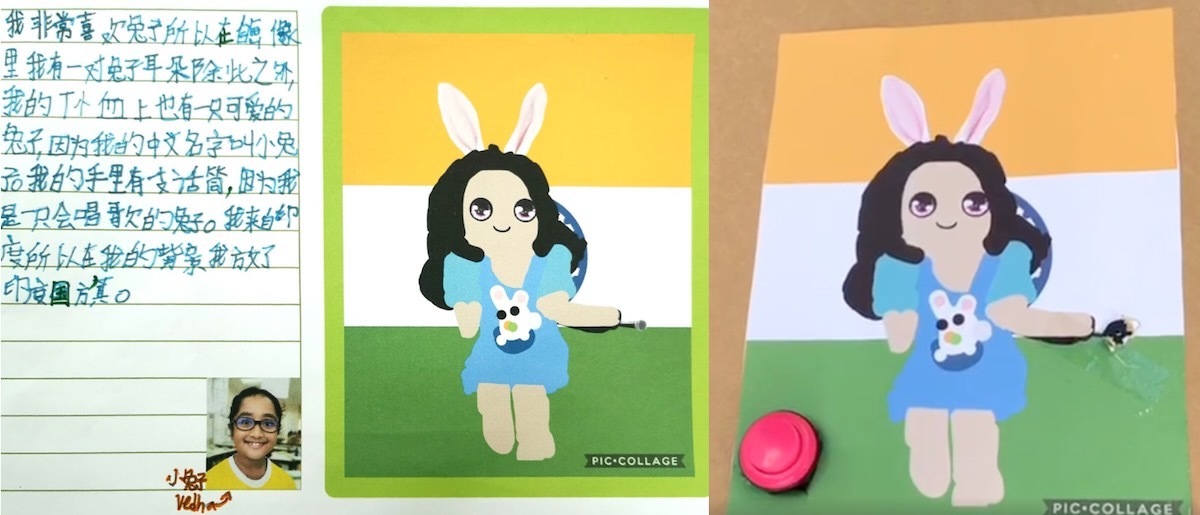Units of Inquiry (UOI) in action
From building machines to investigating food sources, a Unit of Inquiry (UOI) sees children learning about significant concepts (or big ideas). While exploring the unit’s central idea, students learn specific elements from the core subjects – literacy, science, social studies, mathematics, French or Chinese, physical education, art, and music – and form their own connections between what they are learning and how it relates to the world around them; in essence, students don’t just learn, they learn how to learn.
But each UOI may look a little different because of the concept being explored. So how does learning through the UOI framework help develop engaged and curious learners?
TK Primary Years Programme (PYP) Coordinator Pritika Chandiramani breaks it down for us, “UOIs are in-depth investigation into important ideas and require a high level of involvement on the part of the students. Inquiries within each unit are substantial and usually last for several weeks.”
There really is no better way to understand how this works than seeing it in action. Let us uncover how our students learn with a glimpse into some recent units.

Students start exploring concepts across six transdisciplinary themes from as early as pre-kindergarten. During a UOI, students investigate a central idea across different subject areas with lines of inquiry under a teacher’s guidance. They observe and ask questions before delving into relevant data and reporting what they learnt.
As part of the ‘How we organise ourselves’ UOI, our junior kindergarteners learnt about the food journey from farm to table by playing the role of farmers. While exploring the unit's central idea on where food comes from, they built on their knowledge across subjects.
For instance, they gain an understanding of the science behind the process, learning about the life cycle of plants from seed to pollination. They also used their math skills to count eggs during an egg hunt and organise food into groups. Art and literacy came into play as they drew a picture of their favourite activity station and labelled their pictures.
While working in groups, they also developed their language and social skills. There is much to gain in this journey of discovery, where they grow into imaginative and independent learners who thrive on challenges.

Authentic practice during the UOIs offers more than knowledge from a textbook could ever offer. In the ‘Who we are' UOI, grade 3 students inquired into how the body system works by observing the organs of animals first-hand.
During this biology activity, they discussed how our anatomy may be similar or different to an animal’s. They investigated how each organ works to keep their bodies healthy and reflected on the impact their lifestyle choices have on their well-being. By drawing these connections, they extended their prior understanding and developed new understandings that would not have come from reading it in a book.
Similarly, our bilingual students use authentic learning materials wherever possible. Our grade 4 French bilingual students recently went to Sungei Buloh Nature Reserve during Open Minds. They observed living things in their natural environment and measured factors, including temperature and humidity, that affect ecosystems. As they collected data, they were effectively combining science and math, and developed academic literacy skills as they kept a log in French.
Our bilingual programmes, which are PYP aligned, also see students exposed to both languages with two concurrent UOIs. For example, grade 3 student Vedha created her self-portrait by using colours to symbolise her nationality during the Chinese UOI ‘How we express ourselves’.
In the English UOI 'How the world works', she learnt about energy forms and chose one that best represented her. Art met both science and engineering in her final project, where she integrated a buzzer into her initial self-portrait, to represent her love for singing.

By connecting these UOIs in both languages into one integrated learning experience, students make fewer mental transitions and can better engage in deeper learning.
“Our English and Chinese homeroom teachers collaborate closely and creatively to integrate their students’ learning journeys,” Chinese PYP Coordinator Jasmine Chen explains. “With this synergistic approach, we observe that students develop more profound, wider interconnections, and transferable understandings of both units.”

Students make practical connections to what they understand in everyday life. Guided by teachers to consider the real-world context and issues, they are empowered to reflect on ways they can make a difference in our community. Grade 6 students demonstrated this in another ‘How we organise ourselves’ UOI.
In the STEAM makerspace, they examined different ways to produce sustainable masks, water bottles, and other products, while putting scientific and engineering concepts to work. The hands-on activity sets them thinking about how they can do their part to tackle environmental issues in the long run.
The curriculum is constantly evolving. Lakeside PYP Coordinator Anika Sommer shares how our teachers continually reflect on how to make the UOIs more engaging, while bringing their diverse perspectives to the table. This means more interesting lessons for students in the year ahead, from discovering cultural diffusion through food to exploring the consequences of our digital footprint.
Teachers also keep the curriculum relevant for our changing world. Anika uses the example of new standards adopted for Social Studies, where lessons are designed to be used in international contexts and contain transferable ideas.
We are sure you will agree, our UOIs are not simply focused on academic development alone. They are developed to help children become critical thinkers and creative problem solvers who, through their global outlook, are always seeking to make a positive impact in the world.